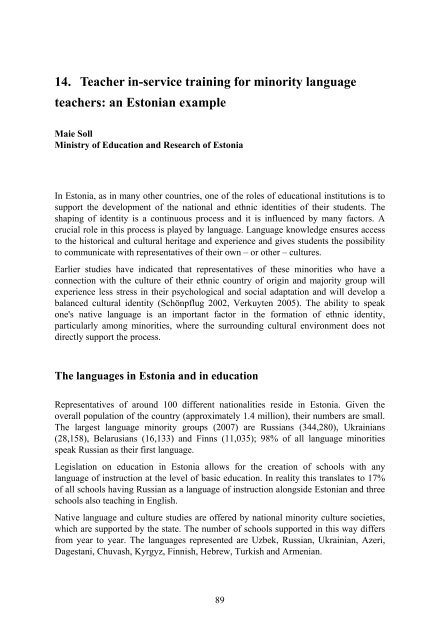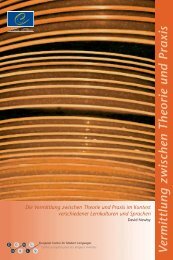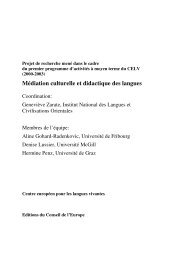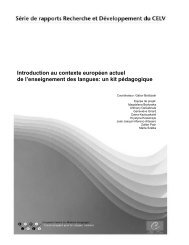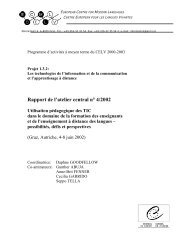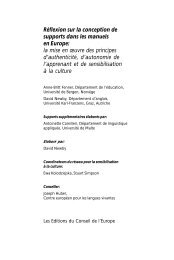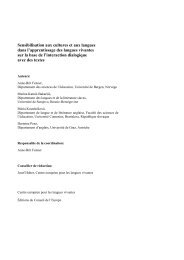cohesion - European Centre for Modern Languages
cohesion - European Centre for Modern Languages
cohesion - European Centre for Modern Languages
Create successful ePaper yourself
Turn your PDF publications into a flip-book with our unique Google optimized e-Paper software.
14. Teacher in-service training <strong>for</strong> minority language<br />
teachers: an Estonian example<br />
Maie Soll<br />
Ministry of Education and Research of Estonia<br />
In Estonia, as in many other countries, one of the roles of educational institutions is to<br />
support the development of the national and ethnic identities of their students. The<br />
shaping of identity is a continuous process and it is influenced by many factors. A<br />
crucial role in this process is played by language. Language knowledge ensures access<br />
to the historical and cultural heritage and experience and gives students the possibility<br />
to communicate with representatives of their own – or other – cultures.<br />
Earlier studies have indicated that representatives of these minorities who have a<br />
connection with the culture of their ethnic country of origin and majority group will<br />
experience less stress in their psychological and social adaptation and will develop a<br />
balanced cultural identity (Schönpflug 2002, Verkuyten 2005). The ability to speak<br />
one's native language is an important factor in the <strong>for</strong>mation of ethnic identity,<br />
particularly among minorities, where the surrounding cultural environment does not<br />
directly support the process.<br />
The languages in Estonia and in education<br />
Representatives of around 100 different nationalities reside in Estonia. Given the<br />
overall population of the country (approximately 1.4 million), their numbers are small.<br />
The largest language minority groups (2007) are Russians (344,280), Ukrainians<br />
(28,158), Belarusians (16,133) and Finns (11,035); 98% of all language minorities<br />
speak Russian as their first language.<br />
Legislation on education in Estonia allows <strong>for</strong> the creation of schools with any<br />
language of instruction at the level of basic education. In reality this translates to 17%<br />
of all schools having Russian as a language of instruction alongside Estonian and three<br />
schools also teaching in English.<br />
Native language and culture studies are offered by national minority culture societies,<br />
which are supported by the state. The number of schools supported in this way differs<br />
from year to year. The languages represented are Uzbek, Russian, Ukrainian, Azeri,<br />
Dagestani, Chuvash, Kyrgyz, Finnish, Hebrew, Turkish and Armenian.<br />
89


